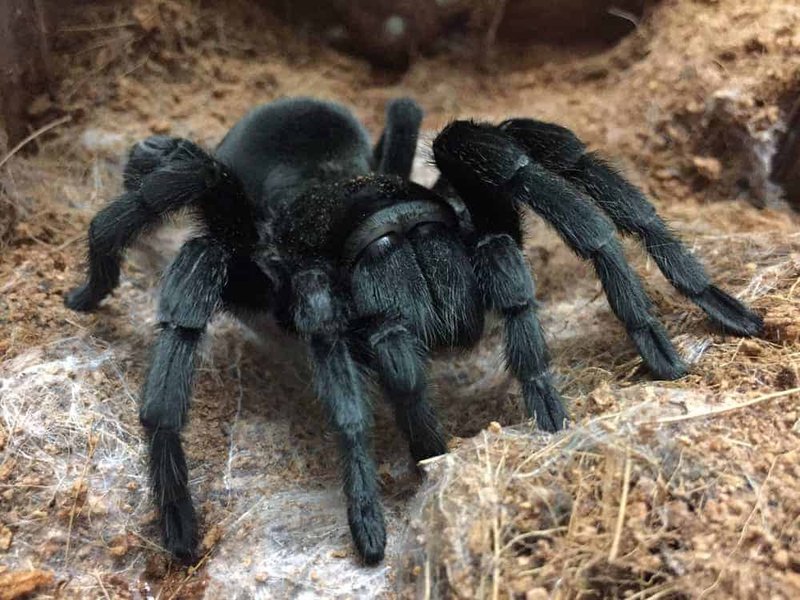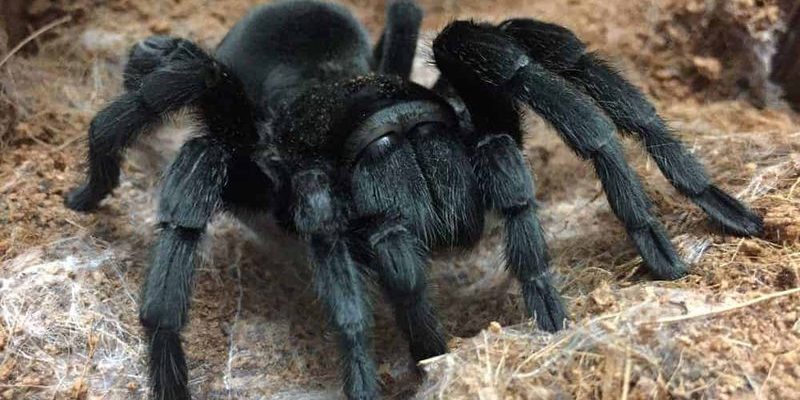
Let’s dive into the world of the Brazilian Black Tarantula, clarifying what makes this creature tick. Think of it like peeling an onion—layer by layer, we’ll uncover the facts about this fascinating arachnid.
What Is the Brazilian Black Tarantula?
The Brazilian Black Tarantula, scientifically known as *Grammostola pulchra*, is a stunning creature found primarily in South America. With its glossy, pitch-black body and long legs, it’s easy to see why many enthusiasts adore this tarantula. These spiders can grow up to 6 inches in leg span, making them one of the larger tarantula species.
You might be wondering where they live. These tarantulas typically call the Brazilian rainforests home. They prefer humid environments and generally create burrows in the ground, where they can hide and hunt for tasty insects. Think of it as their cozy little cave, where they feel safe from predators.
Most Brazilian Black Tarantulas are kept as pets, and their striking appearance and relatively calm nature have made them popular in the exotic pet trade. However, their beauty doesn’t negate the questions surrounding their temperament.
Are Brazilian Black Tarantulas Dangerous to Humans?
When it comes to danger, the Brazilian Black Tarantula isn’t as terrifying as it might sound. Their venom is not considered lethal to humans. While a bite can be painful—much like a bee sting—the effects are generally mild. You might experience swelling, redness, or some discomfort, but serious reactions are rare. In a way, they’re more of a drama queen than a true threat.
But let’s not sugarcoat it: a bite from any tarantula is not something you want to experience. While these spiders are not aggressive, they’ll definitely defend themselves if they feel threatened. Imagine someone cornering you at a party—you’d probably react defensively too!
If you’re handling one, it’s crucial to be careful. Always respect their space and avoid sudden movements. Honestly, most bites happen not out of aggression, but from mishandling or surprise.
Behavior: Are They Aggressive?
Now, let’s talk about behavior. The Brazilian Black Tarantula is generally known for its calm demeanor. Unlike some other tarantula species that are known for their feisty attitudes, this one tends to be more laid-back. Think of it as the chill friend who prefers hanging out at home rather than causing a scene.
However, if provoked, these spiders can show a defensive side. They might kick urticating hairs (tiny, irritating hairs from their abdomen) as a warning. This can be unpleasant but is not dangerous in the same way a bite would be. It’s like them saying, “Back off, buddy!”
In a pet setting, they can become accustomed to their owner’s presence. Many owners report that their Brazilian Black Tarantulas can even be handled after some time of gentle interaction. Still, it’s vital to read their body language. If they’re rearing up or showing signs of distress, it’s best to give them space.
Can Brazilian Black Tarantulas Be Kept as Pets?
Yes, Brazilian Black Tarantulas can be excellent pets! Their gentle nature and hardiness make them a favorite among both seasoned keepers and beginners. When you think about pet spiders, these might just be the best option if you’re ready to take the plunge into the arachnid world.
Here’s what you need to know about caring for one:
- Housing: A properly sized enclosure is essential, with plenty of substrate for burrowing and hiding.
- Humidity and Temperature: Keep their habitat humid (around 70-80%) and maintain a warm temperature (75-85°F).
- Feeding: A diet of crickets, mealworms, and other insects will keep them happy and healthy.
It’s also crucial to ensure they’re not disturbed too often. Just like any animal, they need downtime. If you’re considering one as a pet, you’ll find that they can be both low-maintenance and surprisingly rewarding to observe.
Common Misconceptions About Brazilian Black Tarantulas
There are plenty of myths swirling about the Brazilian Black Tarantula. One of the biggest is the notion that all tarantulas are aggressive or deadly. This simply isn’t true. Many people hear the word *tarantula* and immediately think of danger. But, as we’ve explored, Brazilian Black Tarantulas are quite the opposite.
Another misconception is that tarantulas are all fast. While some species are quick on their feet, Brazilian Blacks tend to be more sedate. They may take their time moving around, especially if they feel safe in their environment. In fact, their slow and deliberate movements are part of what makes them so fascinating to watch!
So, if you’re trying to decide whether you’ll be running away from this spider or enjoying its company, know that it’s more likely to sit back and chill than to chase after you.
In essence, the Brazilian Black Tarantula is not the bogeyman of the spider world. They are not inherently dangerous or aggressive, and their venom poses little threat to humans. Instead, they’re serene creatures that, when treated with respect, can make interesting companions.
So, if you’ve been curious about these fascinating spiders, it’s worth learning more. Whether you’re considering keeping one as a pet or just want to know more about them, remember to approach the topic with an open mind. The Brazilian Black Tarantula might just be more friendly than you think!

